QCF: Takeshi & Hiroshi
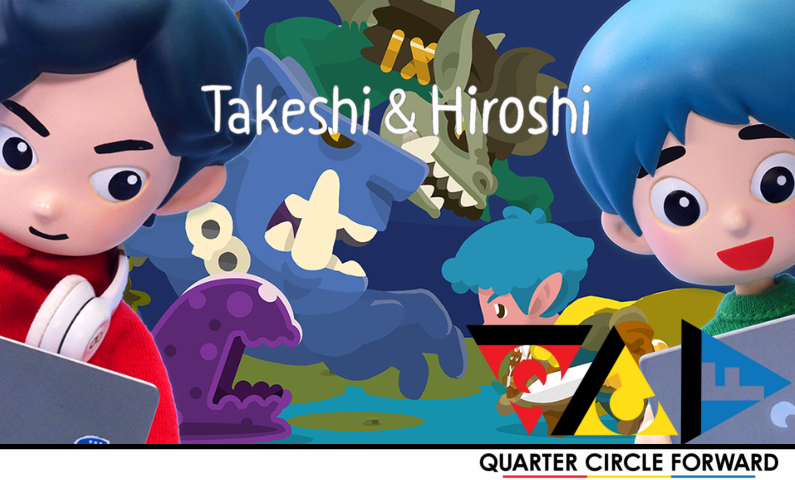
 know it may sound a bit silly, especially when you think about the importance of roles like Fire Fighters and Surgeons but, it can be argued that Video Game Developers are among some of the biggest heroes of modern society (this can honestly be said about all creatives, but stick with me, I’m going somewhere with this.)
know it may sound a bit silly, especially when you think about the importance of roles like Fire Fighters and Surgeons but, it can be argued that Video Game Developers are among some of the biggest heroes of modern society (this can honestly be said about all creatives, but stick with me, I’m going somewhere with this.)
The worlds they can weave, with designs that are teeming with a sense of wonder that bewilders and empower anyone looking for an experience to escape to; Game Developers offer an invaluable service, and for one aspiring designer-in-the-making, it’s the one gift he can give to an ailing little brother.
In a story where your passion can be someone’s entire world, enter Takeshi & Hiroshi; an interactive novel from Oink Games that’s packed with a lot of heart, a surprising amount of gameplay depth, and the regrettable snag of ending way too soon.
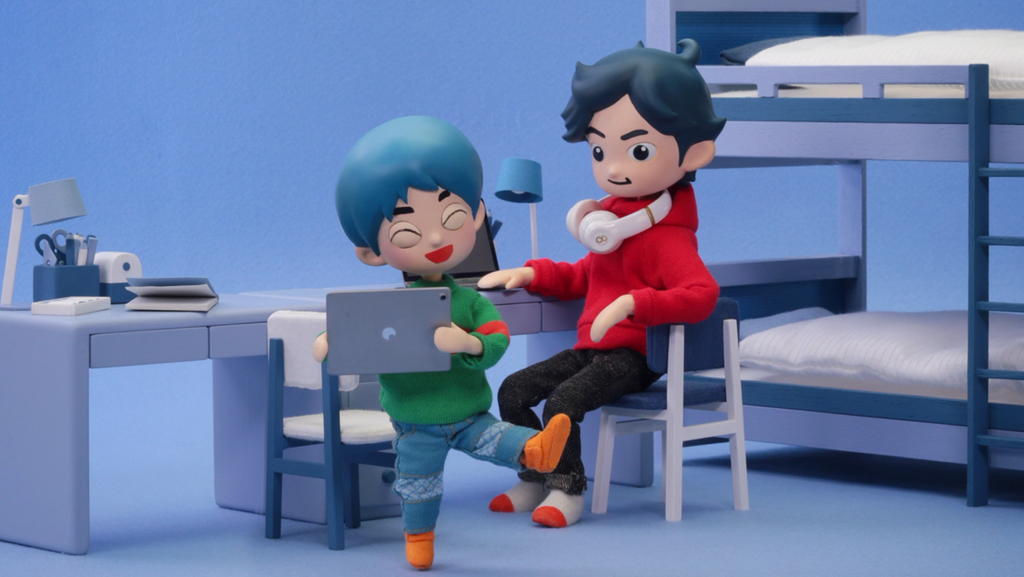
Brotherly love may as well be its subgenre of its own for indie games at this point with how often we’ve seen the trope used in recent years, but Takeshi & Hiroshi takes a more different approach by focusing more on the responsibilities that come with being an elder sibling. At the ripe age of 14, Takeshi has already crafted a working engine for his current mobile RPG game project, and is riding on the high of his younger brother’s praise, relishing in his accomplishments and the self-proclaimed genius that got him this far. Takeshi’s gloating gets the better of him though as he goes on to talk up the pedigree of his game to his little bro, implying that the development of the title is further along than it actually is. All the bragging manages to pique Hiroshi’s curiosity to the point of demanding to play the game that his older brother had teased so that he can see what all the fuss about. Not wanting to disappoint his biggest fan after all of the bravadoes, Takeshi quickly devises a way for Hiroshi to play his rough draft of a title, by dynamically controlling the in-game AI himself in real-time with his laptop under the guise of doing homework.
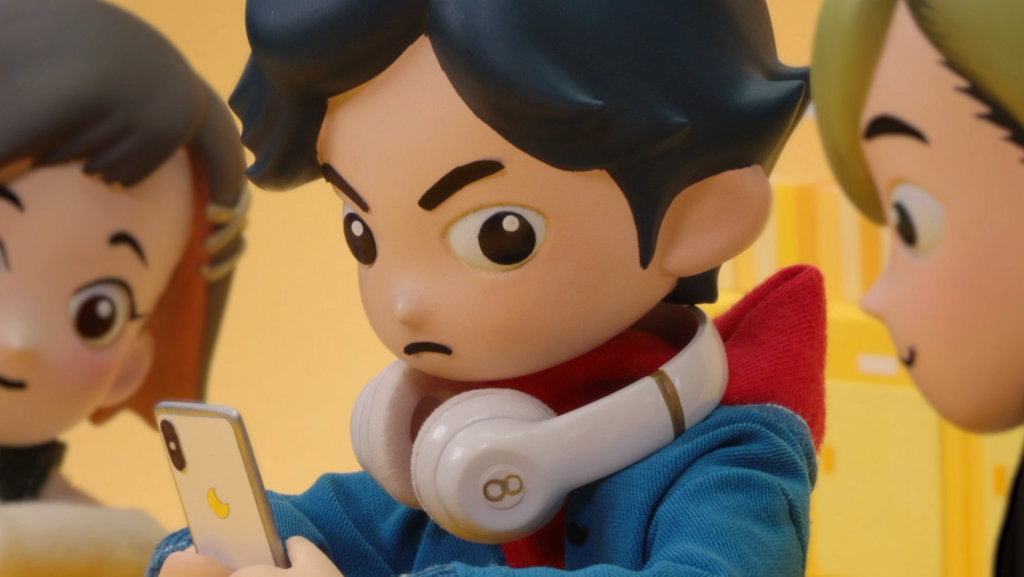 Unbeknownst to Hiroshi who is controlling the Valiant Hero character, the player will determine the enemy encounters that he engages, and the tactical lineup they’ll face off against him in. This is where the concept gets interesting, as the goal of the game isn’t just to ensure that Hiroshi is able to reach the end of the level but to make sure that he has fun doing it. The choice of monsters that you lay in front of Takeshi’s impressionable little guy and the level of challenge they bring to the fight will determine the amount of joy he experiences playing through his older brother’s game—the more harrowing the melee, the deeper his sense of joy is emanated. The enemy variety is fairly tame at first with your introductory slimes, and cronies that only exist to be fodder to harvest experience points out of, but it ain’t long before the new classes get to be more complex. Takeshi will soon program into goons like giant orcs who can tank large attacks before going down, skeletons that can attack you from a distance, and even flying gargoyles that can stun the hero for turns upon turns.
Unbeknownst to Hiroshi who is controlling the Valiant Hero character, the player will determine the enemy encounters that he engages, and the tactical lineup they’ll face off against him in. This is where the concept gets interesting, as the goal of the game isn’t just to ensure that Hiroshi is able to reach the end of the level but to make sure that he has fun doing it. The choice of monsters that you lay in front of Takeshi’s impressionable little guy and the level of challenge they bring to the fight will determine the amount of joy he experiences playing through his older brother’s game—the more harrowing the melee, the deeper his sense of joy is emanated. The enemy variety is fairly tame at first with your introductory slimes, and cronies that only exist to be fodder to harvest experience points out of, but it ain’t long before the new classes get to be more complex. Takeshi will soon program into goons like giant orcs who can tank large attacks before going down, skeletons that can attack you from a distance, and even flying gargoyles that can stun the hero for turns upon turns.
The dynamic casts a brilliantly cerebral twist on what would otherwise be an elementary design as progression can only be achieved through a mix of enemies that's just reckless enough to push Hiroshi to his last hit-point because anything less could risk boring the kid to tears.
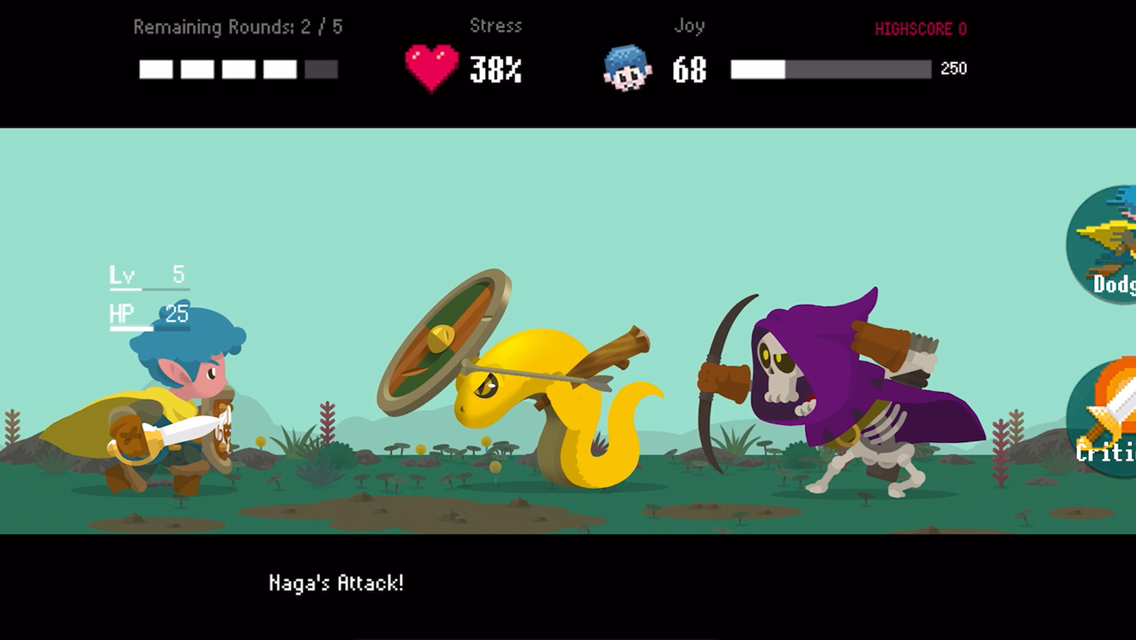
The innovation of this premise even pays off narratively by effectively balancing the progression of the in-game mechanics with the advancement of the plot, diegetically pacing the game’s narrative in tune with the gameplay that carries it. Each chapter will introduce a new enemy type or skill that changes up Takeshi’s ever-developing adventure, giving way to new methods in which you can enthrall his younger brother with delight that was bigger than the last.
While the prelude is innocent enough, the story begins to take a far more somber turn as Hiroshi’s physical health begins to fail him, prompting an emergency stay at the local hospital. It’s here where the writing really shines as Takeshi’s efforts are no longer fueled by his insecure ego, but by his desire to ease his younger brother’s pain the only way he knows how—developing an interactive adventure just for him.
Despite the immersive resonance between the story and it’s the gameplay, there’s no denying the all-too domestic familiarity of the tropes at work in Takeshi & Hiroshi’s writing. The plot is your typical coming of age story where lessons of humility, altruism, respect, and love when it’s boiled down to the sum of its parts—the difference maker here is the charming presentation of its beautiful Claymation art design, and the stop-motion puppetry that brings it all to life.
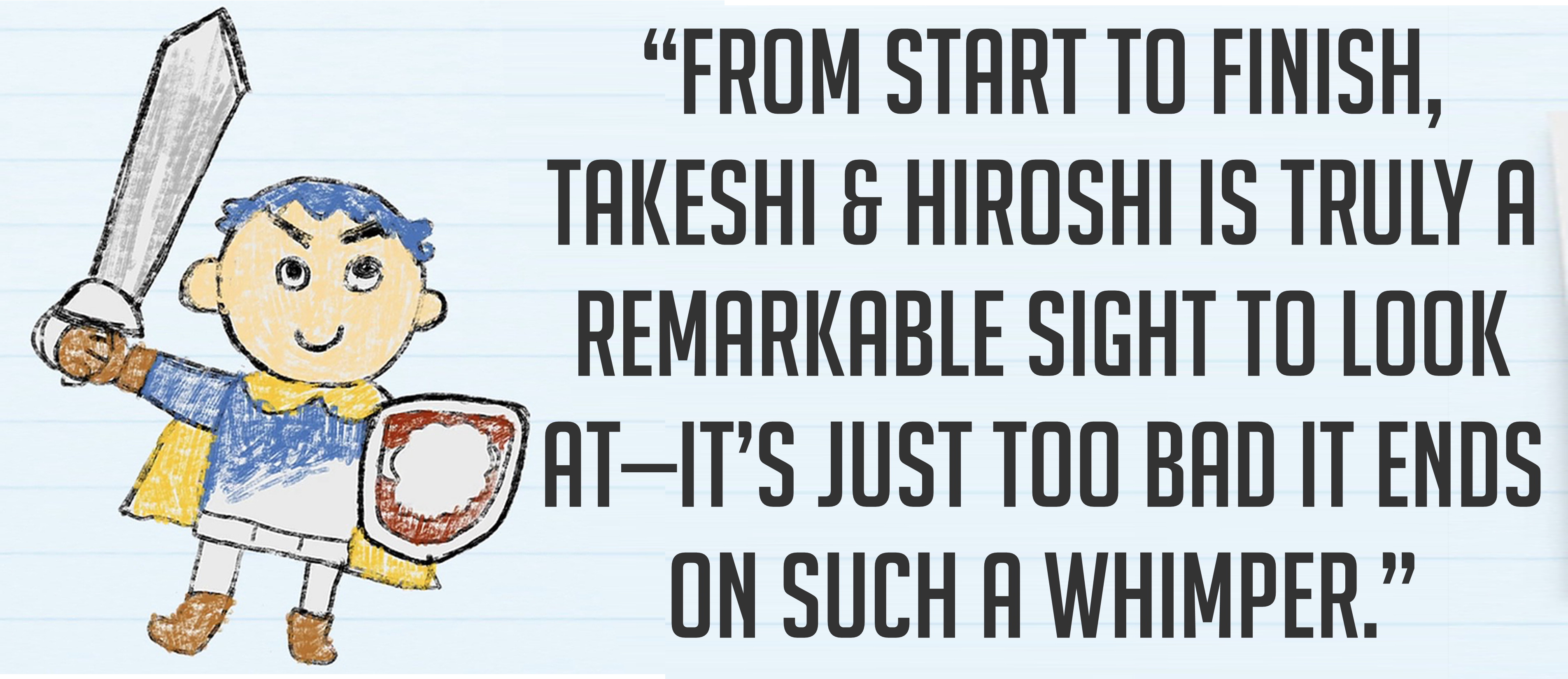
The most appealing element to its graphical style is the equilibrium of minimalism and detail in the visuals and how well it clicks with the stilted motion of its animation. The small touches of scenery lie the conspicuously non-descript Xbox One being shelved alongside a Switch in the background against static past of soft color not only helps give these sculpted characters more life on screen, but it harmonizes with the animation of the visuals quite nicely. Even though the game only runs at thirty frames per second, it’s enough to dazzle the eyes when compared to the typical stop-motion stutter outputted from the Claymation standard of twenty-four frames per second. From start to finish, Takeshi & Hiroshi is truly a remarkable sight to look at—it’s just too bad it ends on such a whimper.
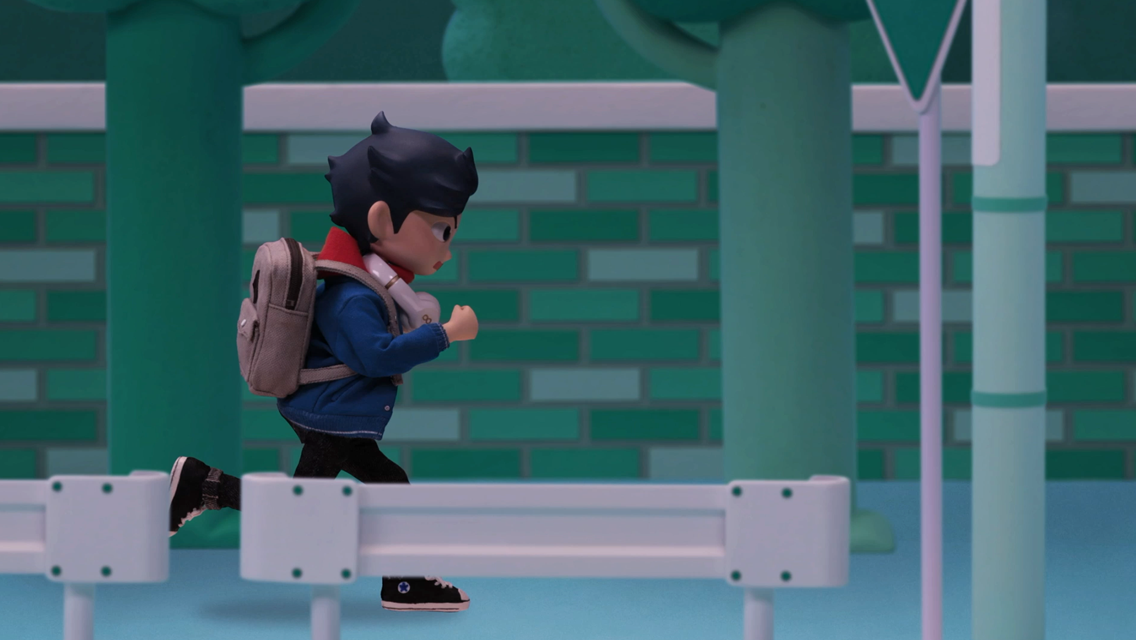 The running themes of family and friendship in the game’s direction have a promising build-up, and it does a great job of pacing emotional stakes for both of the brothers, but at as you near the penultimate point of the game’s climax, the dramatic setup for the plot just flatlines into an anti-climactic slump of an ending. The finale isn’t just disappointing, it’s abrupt; while there are hints that the meta-game at the center of the plot has reached its end, the same can’t be said for the character development of the brothers and their supporting cast—almost as if the initial scheme of the title was built around an episodic formula, and never tweaked by the time development was wrapping up.
The running themes of family and friendship in the game’s direction have a promising build-up, and it does a great job of pacing emotional stakes for both of the brothers, but at as you near the penultimate point of the game’s climax, the dramatic setup for the plot just flatlines into an anti-climactic slump of an ending. The finale isn’t just disappointing, it’s abrupt; while there are hints that the meta-game at the center of the plot has reached its end, the same can’t be said for the character development of the brothers and their supporting cast—almost as if the initial scheme of the title was built around an episodic formula, and never tweaked by the time development was wrapping up.
Disappointing conclusion aside, Nintendo Switch owners could do a lot worse with the game’s meager pricing point of only nine Washington’s—and it’s a story that celebrates the power of creativity, especially in when it comes to the agency and immersion of video games. We can only hope to see navel-gazing this conducive within the indie scene as the industry continues to face challenges of accessibility and stability in the road ahead.





 GeorgieBoysAXE
GeorgieBoysAXE




